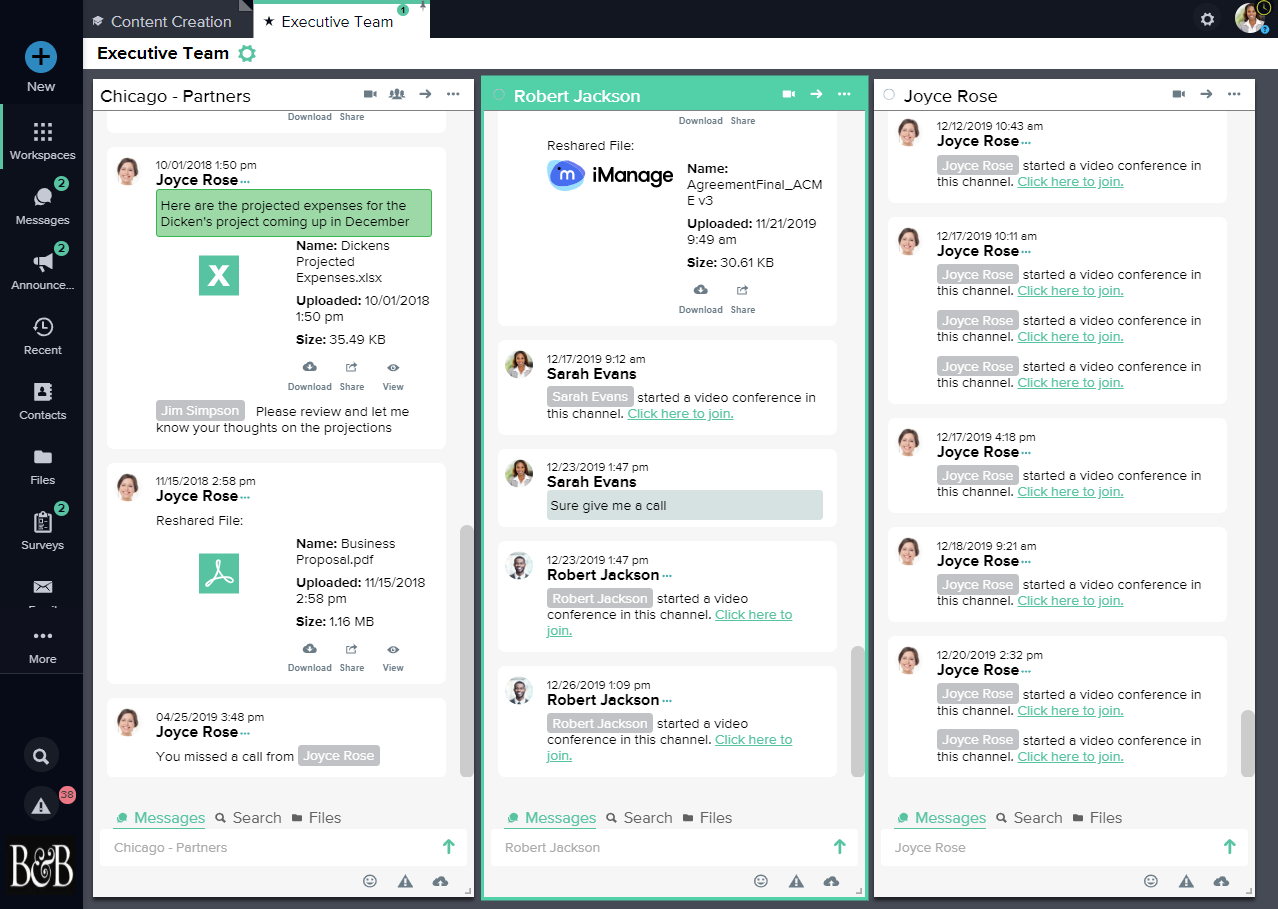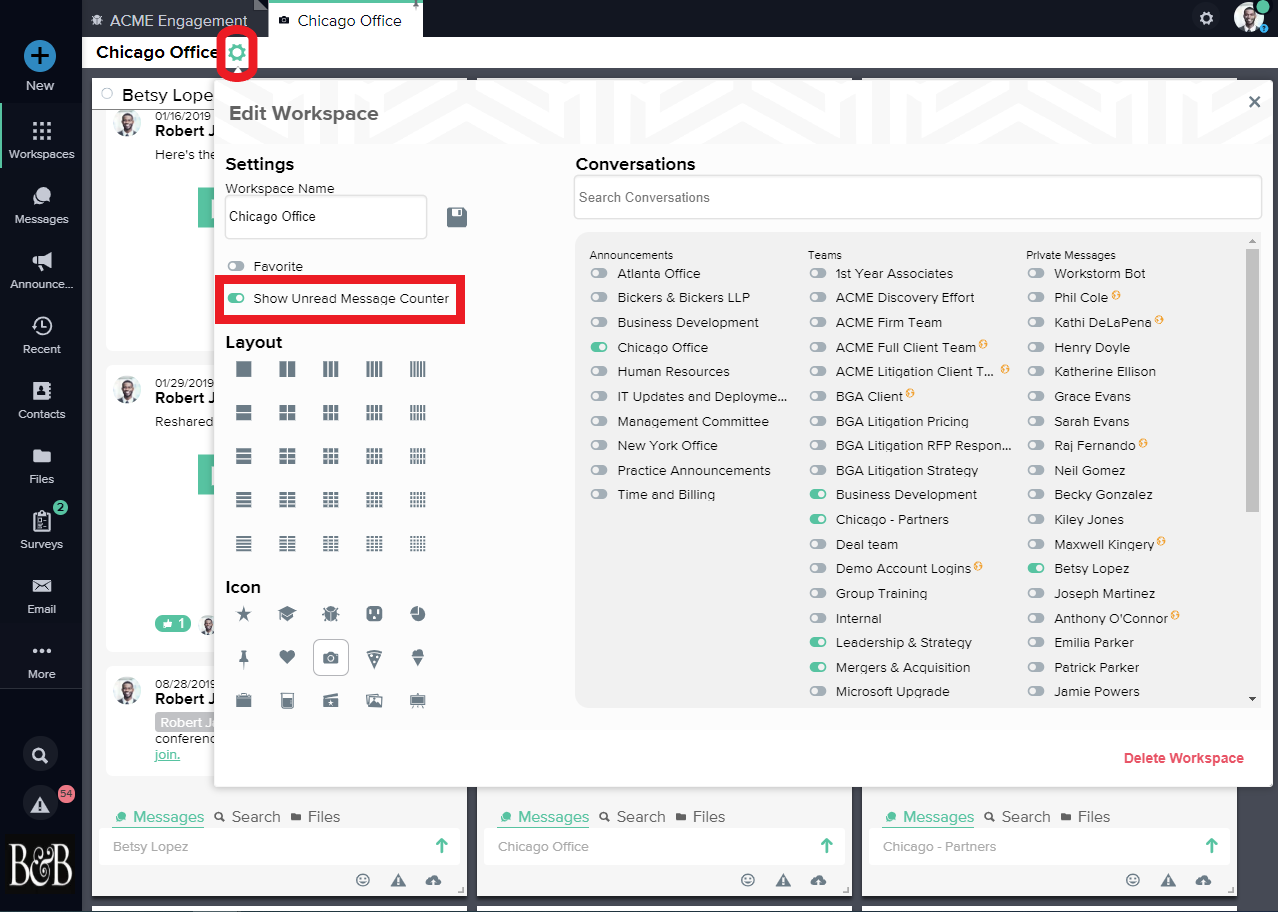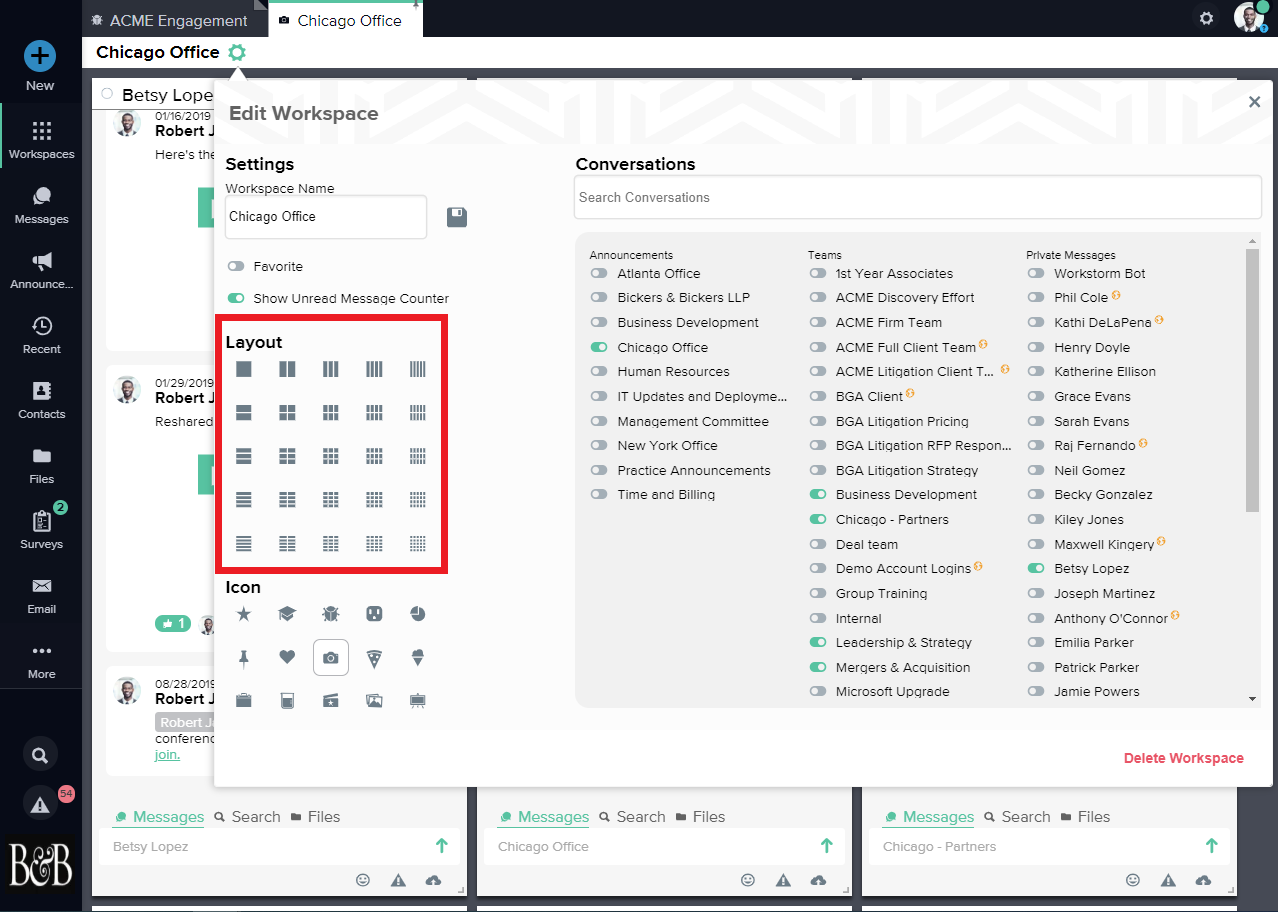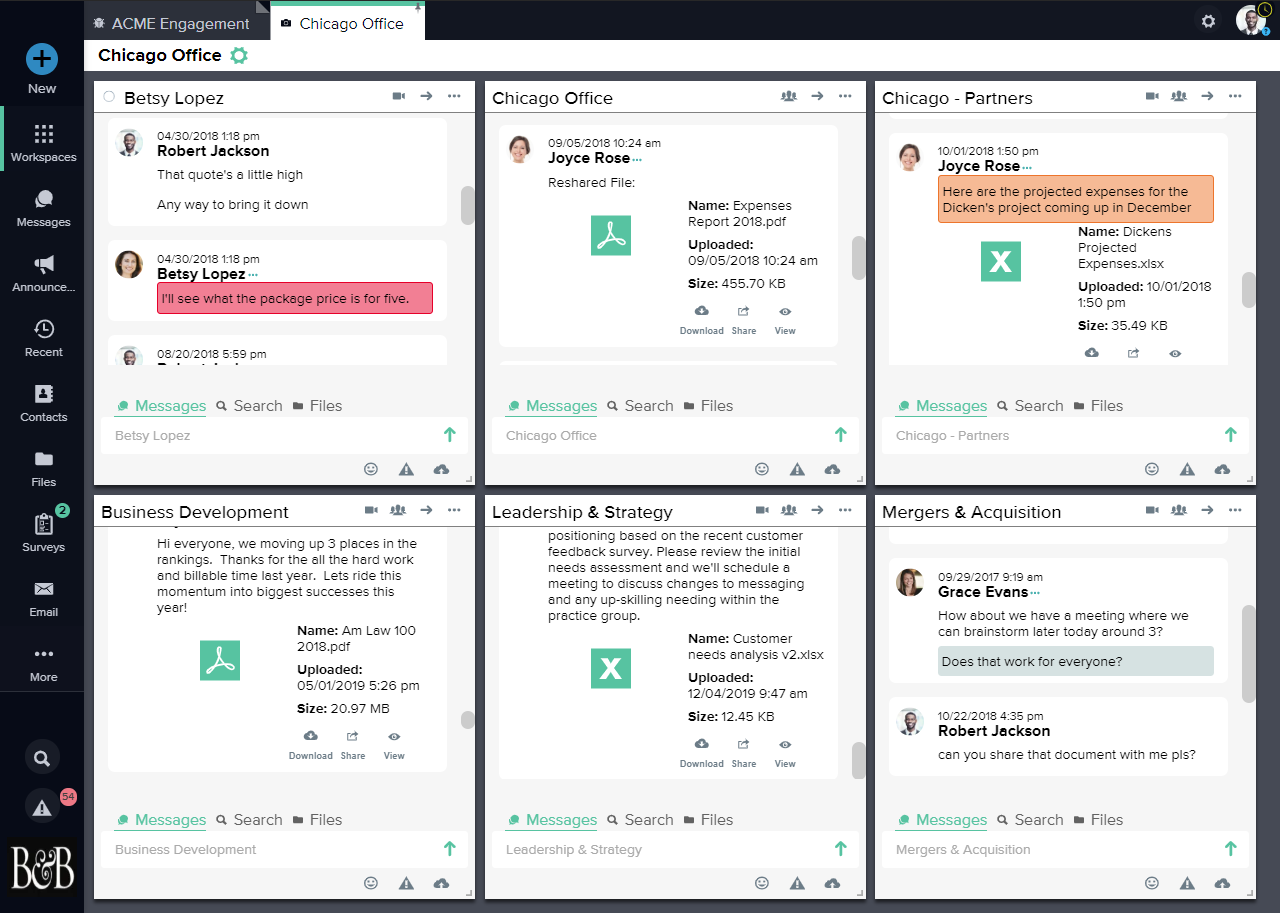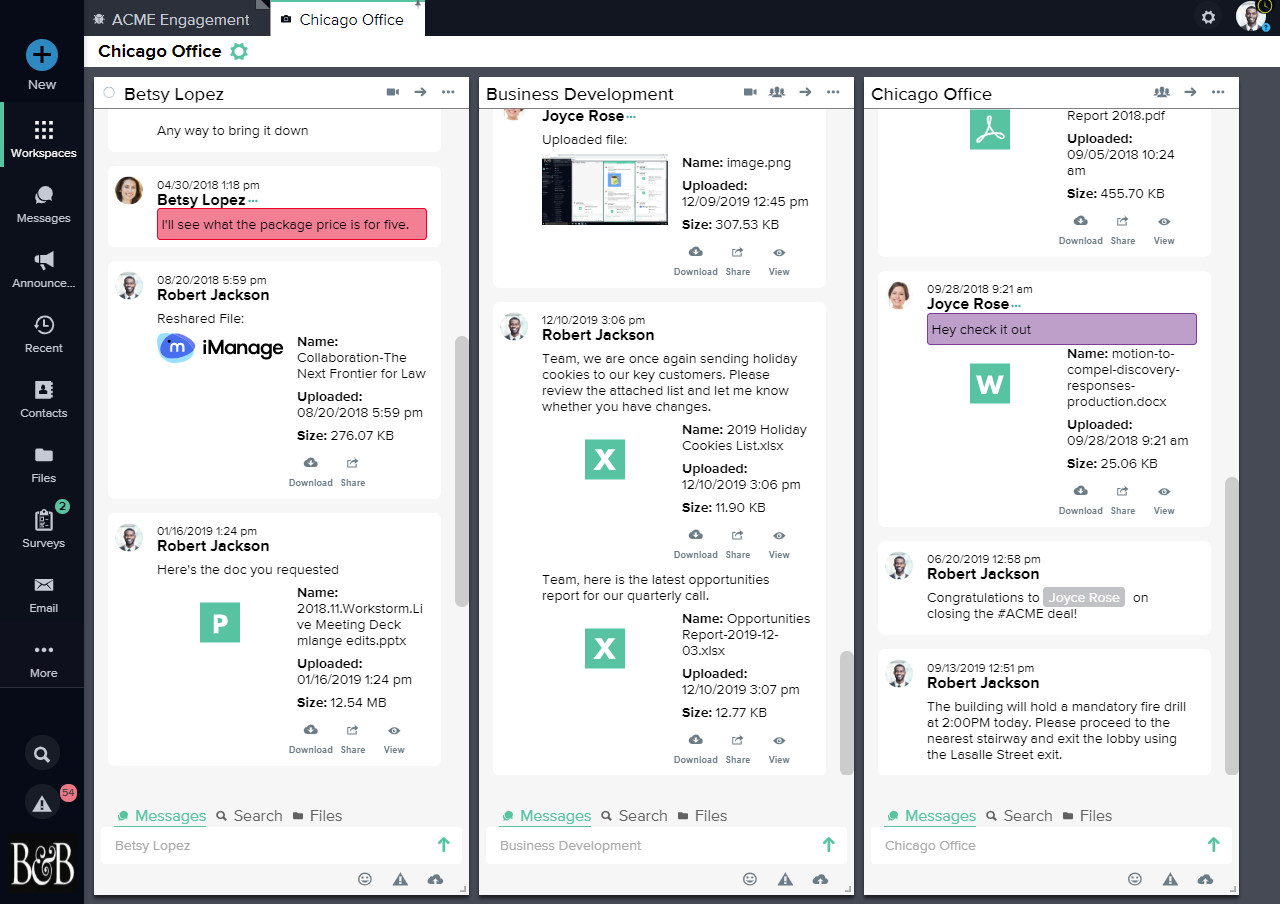How to use Workspaces Effectively
Tips and best practices for getting the most out of your Workspaces
If you read our article on how to create Workspaces, then you’re already up to speed on how and why members organize their conversations into workspaces. Workspaces not only help group your messages by category, topic, project, or client, they also enable you to view multiple related messages across a single dashboard. But what happens when you have multiple workspaces?
This article provides tips for how to make Workspaces work for you. In the following sections, we’ll walk through best practices for organizing, prioritizing and viewing your workspaces. Let’s start by getting organized.
Organizing Workspaces
There’s no exact science to organizing your Workspaces, but there are some best practices that suit different working roles and responsibilities. Often Workstorm members align with the Project Management or Client Services use cases outlined below, while others create a mix of the two or a unique organization system all their own. Try a few of the ideas below and see what works for you.
Use Case 1: Project Management
While your job may not be a Project Manager in title, it may be in function. Are you juggling multiple complex initiatives at once, that involve many different people, deliverables, and stakeholders? If so, you may decide to use Workspaces like a project manager.
Take Sarah, for example. Sarah is a Project Manager at Acme Co. and a Workstorm power-user. Let’s take a look at how she organizes her Workspaces.
Project-based workspaces
Sarah started by making a list of all her current, ongoing, and upcoming initiatives. Looking at her list, she realized more than half of her current Workstorm conversations were addressing those initiatives. So, she created a workspace for each initiative, and added her relevant conversations into each workspace.
For example, Sarah is the project manager for Acme Co.’s new website relaunch, which includes multiple initiatives under this one project umbrella. So, she created one workspace for her Dev Team messages, one for Content Creation, and one for Designers.
Within the Dev Team workspace, Sarah has an ongoing team message with all of her developers, as well as several private messages with individual developers, including some that are external or outside her company. This enables her to open the Dev Team Workspace, send an update to the whole team, and then send a side note assigning a task to one particular developer – all while working within the same Workspace. Sarah uses a similar structure for her Content Creation and Designers Workspaces, which include agencies, consultants or freelancers she works with.
Stakeholder and announcement workspaces
Once Sarah finished creating Workspaces for each website initiative, she added two more Workspaces: one for making project announcements, and another for managing stakeholders and executive oversight.
For example, Sarah’s CEO, CTO, CMO, and her immediate boss are regularly looking to her for updates and answers about the website relaunch. If a message comes through from these executive stakeholders, she wants to be sure to see it quickly and to respond in a timely fashion. So, she created a workspace for this Executive Team to keep all her stakeholder conversations in one place.
Similarly, Sarah created a separate Workspace for making project announcements, including milestone achievements or deadline updates to all her various stakeholders. This Workspace includes a combination of both Sarah’s project team and stakeholder messages allowing her to update everyone at once, while also allowing her to see at a quick glance what information was last shared with each stakeholder.
Use Case 2: Client Services
Perhaps your job centers around client services rather than project management. In this case, you may wish to structure your workspaces around each client, like Robert does.
Robert is a real estate attorney at a multinational law firm. The majority of his day is spent working on deals for his clients, while the rest of it is spent on business development and administrative tasks within the firm. So, Robert organizes his Workspaces in a client services format.
Client workspaces
For example, Robert works with two client contacts at Client A, and he has a team of three associates who work on Client A’s account. Robert started by creating a Workspace for Client A. Then, he added to that Workspace a team message amongst him and his two clients, as well as the private and team messages he has internally amongst his associates regarding deliverables for Client A.
Robert repeated this structure for Client B, Client C, and so on, until he had a Workspace designated to each client and it’s supporting team of associates.
Administrative workspaces
In addition to his client workspaces, Robert added a couple workspaces for internal administrative work, such as Billing/Invoicing, Human Resources, Business Development, and Company Announcements. These Workspaces include messages with his internal support staff, such as accounting, talent management, and office management.
Prioritizing workspaces
You may find that you use some Workspaces more than others, or that messages in one Workspace are more time sensitive than others. In this case, turn on or turn off the message counter for each new message received within the Workspace by toggling on or off the Show Unread Message Counter option. Access this toggle by clicking on the green settings gear icon to the right of the Workspace’s name.
By turning on or off the message counter for each Workspace, you are able to give front-and-center visible priority to the Workspaces and messages that matter most to you, while de-emphasizing ones that require less immediate attention.
Viewing workspaces
Finally, it’s important to find the right viewing format or layout to help you read and respond to messages within your workspaces. Some Workstorm members prefer to see all the messages within a Workspace all at once, while others prefer to see fewer messages with more text in each. Here are some of the pros and cons to some favorite layouts, according to some of our power-users.
5×5
Especially for members with extra wide screens, the 5×5 layout offers a great bird’s eye view of all your important messages at once. Using this layout, you can communicate with more people in one place, without changing Workspaces. If it’s too much to digest, or if your Workspace doesn’t contain enough messages to warrant the 5×5, try the 4×4 or 3×3 layout for a better fit.
2×3
The 2×3 layout is similar to the 5×5, offering a bird’s eye view of all your important messages at once, but it is better suited for laptops or smaller desktop screens. Also, members with fewer ongoing messages may opt for the 2×3 versus the 5×5 layout.
1×3
Some members digest information better from left to right, rather than top to bottom. Others frequently attach files and embed videos, GIPHY’s, and images into their messages, making each message longer and more visually oriented. This layout organizes messages into columns, rather than lists or tiles, enabling you to view a longer stretch of each messages. While the 1×5 layout is similar and provides for more columns, be sure you are using a wide screen, or you may wind up with columns too skinny to be useful.
Workspaces are designed to custom-fit your unique working habits. Only you know what works for you, and you won’t know until you try. So, take a few moments to find the layout that helps you fly through tasks, identify which workspaces take priority, and define your workspaces to match your work. You’ll be glad you did.


